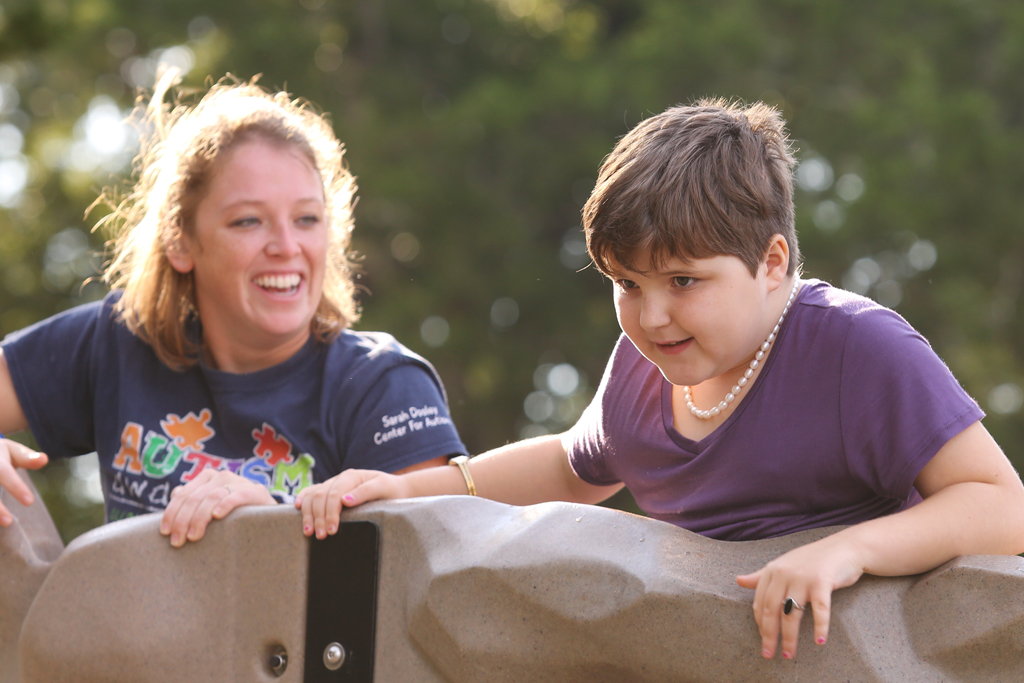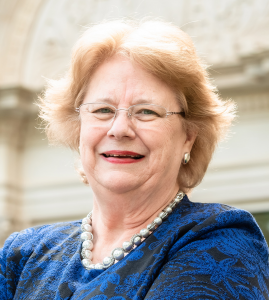
Navigating the Pandemic for Children with Autism
 Column by CEO Kathleen Burke Barrett
Column by CEO Kathleen Burke Barrett
Published by the Richmond Times-Dispatch, March 26, 2022
More than two years ago, COVID-19 was declared a national emergency. The prevailing assumption was that U.S. schools would be closed for a week or two before reopening and returning to “normal.”
Given the primary challenges for students with autism amid COVID were a lack of structure, social interactions and instruction delivery, our goal at St. Joseph’s Villa’s Sarah Dooley Center for Autism (SDCA) was to get our students back into the classroom as soon as safely possible, while providing parents with stabilizing resources.
The day after the World Health Organization announced COVID-19 was a global pandemic, our teachers and staff immediately created customized packets for each student to work toward their individualized education plans, and mailed the materials to their homes. We built a library of YouTube videos and used TeachTown software, which helps gamify education for children with special needs. Students continued receiving custom packets each week.
While support at home was helpful, students grappled with new schedules and new learning environments. When 13-year-old Katherine Evans stays home from school for an extended period, she thinks of it as “vacation time,” making it impossible for her to focus on virtual instruction. To alleviate this stress, she accompanied her parents to the grocery store and other outings on a regular basis while school was closed.
Her mother, LaDonna Evans, said, “The community-based outings at Sarah Dooley really set Katherine up for success. Because she was used to going to Walmart and other places with classmates, those social skills are what got us through the lockdowns.”
Indeed, according to an Autism Speaks COVID-19 survey, “By far, the most common difficulty for caregivers during the pandemic has been a need for resources to manage challenging behaviors that have increased due to disruptions to routine, school closings and lack of access to in-school supports.”
Realizing the need to provide a lifeline to parents and to keep students engaged, SDCA reopened in September 2020 — well ahead of many public schools across the country. About two-thirds of students returned to school on day one of reopening.
Exceeding public health guidelines
A COVID-19 task force was formed at St. Joseph’s Villa, consisting of administrators and a clinical team. To keep students and teachers safe, the group developed protocols based on guidelines from the Virginia Department of Health, and the Centers for Disease Control and Prevention.
During the summer of 2020, as we prepared for students to come back to school, we created videos about how to put masks on and stay apart from others. But most children didn’t understand, and about 30% to 60% were not wearing masks at any given time. Maintaining social distancing also is not practical with these students — some of whom need help with eating and personal hygiene.
We quickly determined that if all adults were strictly masked, and we conducted rigorous contact tracing, we could be successful. Pre-pandemic, we had 12 classrooms with seven or eight students in each. To socially distance the students, we split them into 24 classrooms with just four to six kids per class. It stretched our resources thin, but we were committed to making it work.
If someone was sick, they were tested and quarantined. Sometimes, we were up until 1 a.m., making sure everyone who came in contact with a positive case knew about it before coming to school the next day.
Vaccines arrive
In January and February of 2021, when COVID-19 vaccines were authorized for emergency use, we were fortunate that VDH prioritized our teachers and staff as essential workers.
Meanwhile, we also were readying our newly renovated Sarah Dooley Center for Autism building to open in September 2021. If there is a silver lining to this pandemic, it’s that we realized the importance of virtual learning and training, and made sure to fully equip the space with the latest broadcast technology. The center will serve as a model for autism-specific classrooms, designed to be replicable in public school systems with existing resources. All SDCA students are placed with us by their public school systems.
Since 2015, 17 children have successfully transitioned back to their zoned public schools. The Virginia Department of Education reports the number of students with autism has increased by approximately 106% over the past decade, totaling more than 24,000 today.
As we make our way back to our new normal, we are pleased our center is again open to the public. To find out more about who we serve and what makes SDCA a unique partner to public schools, we invite you to schedule a tour of our campus.



